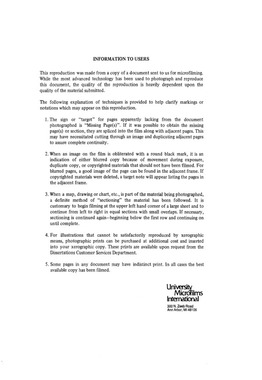| dc.contributor.author | Karber, Lionel Gordon, | en_US |
| dc.date.accessioned | 2013-08-16T12:28:54Z | |
| dc.date.available | 2013-08-16T12:28:54Z | |
| dc.date.issued | 1983 | en_US |
| dc.identifier.uri | https://hdl.handle.net/11244/5123 | |
| dc.description.abstract | Oxidation of 6-methyl-5,6,7,8-tetrahydropterin (6-MTHP) and 6-methyl-5,6,7,8-dihydropterin (6-MDHP) was studied using electrochemical techniques. 6-MTHP is electrolyzed in a 2e-2H('+) quasi-reversible process to an unstable quinonoid-dihydropterin which was studied using thin-layer spectroelectrochemistry. A new thin-layer cell for the study of air-sensitive compounds was developed during the course of these investigations. Rearrangement of the intermediate generated 6-MDHP which was found to exist in two forms. Covalently hydrated 6-MDHP is oxidized in a 2e-2H('+) quasi-reversible process to another quinonoid species which rearranges to a more stable form before dehydrating to 6-methylpterin (6-MP). Non-hydrated 6-MDHP is also electrolyzed directly to 6-MP. Other rather minor processes were detected, but were not investigated further. | en_US |
| dc.description.abstract | A study of polyinosinic acid, hypoxanthine, inosine, and inosine-5'-monophosphate (IMP) was carried out using differential pulse voltammetry. The purpose of the study was to develop a method to detect and quantitate each of the monomeric species in the presence of the polymer. The peak potential of the differential pulse voltammetric oxidation peak of IMP and inosine was nearly identical to that for poly(I). However, the peak potential for the differential pulse voltammetric oxidation peak of hypoxanthine is approximately 300 mV negative of the peak for poly(I). An analytical method was developed which can determine hypoxanthine at less than 0.5% by weight in poly(I) with an accuracy of better than (+OR-)4%. | en_US |
| dc.description.abstract | The peak I(, a) electrooxidation of 5-methyltetrahydropterin was found to be much more complicated than the 2e-2H('+) process of 6-MTHP and other methylated tetrahydropterins. In fact the peak I(, a) process appears to proceed via two pathways, one which retains the methyl group and the other in which the methyl group is lost. The pathway in which the methyl group is lost predominates in phosphate buffer with an ionic strength of 0.5 M, while the retention of the methyl group is favored during electrolysis in 0.5 M NaCl. After the loss of the methyl group, the reaction pathway follows the same course as tetrahydropterin. It is also proposed that the degradation products observed are a result of breakdown of the putative 5-methyl-5,8-dihydropterin intermediate which leads to 5-methyl-7,8-dihydroxanthopterin. | en_US |
| dc.format.extent | xx, 307 leaves : | en_US |
| dc.subject | Chemistry, Analytical. | en_US |
| dc.title | Differential pulse voltammetric oxidation of polyinosinic acid and its components | en_US |
| dc.title.alternative | Electrochemistry of 6-methyl-5,6,7,8-tetrahydropterin. | en_US |
| dc.title.alternative | 5-methyl-5,6,7,8-tetrahydropterin. | en_US |
| dc.type | Thesis | en_US |
| dc.thesis.degree | Ph.D. | en_US |
| dc.thesis.degreeDiscipline | Department of Chemistry and Biochemistry | en_US |
| dc.note | Source: Dissertation Abstracts International, Volume: 44-02, Section: B, page: 0488. | en_US |
| ou.identifier | (UMI)AAI8314773 | en_US |
| ou.group | College of Arts and Sciences::Department of Chemistry and Biochemistry | |
